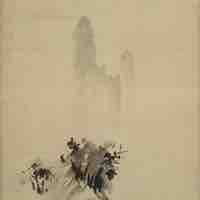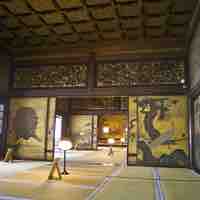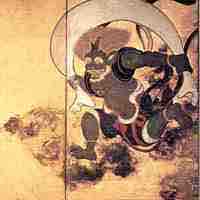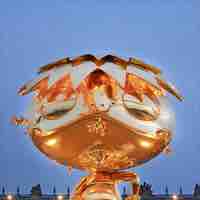Chapter 24
Japan After 1333 CE
By Boundless

During the Muromachi period (1333 - 1578), Zen Buddhism played an influential role in the development of Zen ink painting in Japan.
Zen dry rock gardens were created at temples of Zen Buddhism during the Muromachi Period to imitate the intimate essence of nature.
The ornate castle architecture and interiors of the Momoyama period were a reflection of both a feudal lord's power and a new aesthetic sense.

A shoin is a type of audience hall in Japanese architecture that was developed during the Muromachi period and refined during the Momoyama period.
The art of the tea ceremony flourished during the Momoyama period and was influenced by Zen principles of imperfection and transience.

In the early years of the Edo period, some of Japan's finest expressions in painting were produced by the Rinpa school.

The Kanō school with its naturalistic style was the dominant style of the Edo period (1603 - 1868).
An important art trend during the Edo period was the bunjinga or Nanga school, a kind of literati painting highly influenced by China literati.

With the rise of popular culture in the Edo period, a style of woodblock prints called ukiyo-e became a major art form.

Zenga is the Japanese term for the practice and art of Zen Buddhist painting and calligraphy, which developed during the Edo period.
Traditional Japanese handicrafts associated with the Edo period include temari (a toy handball for children), doll-making, lacquerware, and weaving.

The art of the Meiji period (1868-1912) was marked by a division between European and traditional Japanese styles.
During the Shōwa period, Japan shifted toward totalitarianism until its defeat in World War II, when it led an economic and cultural recovery.

After World War II, Japanese artists became preoccupied with the mechanisms of urban life and moved from abstraction to anime-influenced art.